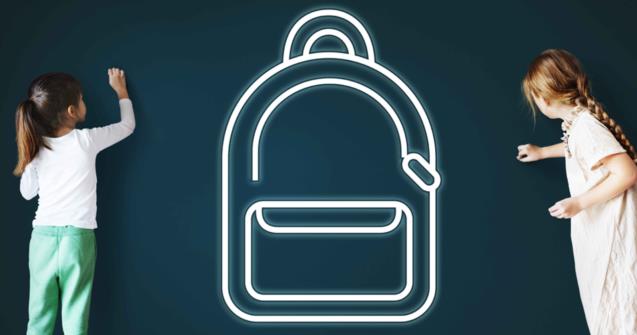
Pictograms-An essential tool for children with special needs
Pictograms are drawings or pictures that clearly represent an action or abstract concept. They play an important role in children's daily life. Whether they are used to illustrate the steps surrounding mealtime, naptime, or rules that must be respected, pictograms are regularly explored in a variety of ways in a daycare setting.
In general, pictograms are used temporarily to help children structure their routine, understand rules, etc. With children who have special needs, pictograms are essential. For many children with special needs and challenges, particularly those with an autism spectrum disorder, the world that surrounds them seems like a series of abstract structures, of nuances that are difficult to understand. Pictograms can be invaluable for these children. They need pictograms to illustrate their different routines, the rules they must follow, and what is forbidden. Children with limited language skills can also use pictograms to express their needs.
How can you use pictograms daily with children?
- To begin, select one aspect you would like to improve (a certain routine, your daily schedule, rules that must be followed, etc.).
- Determine which pictograms are essential depending on what you wish to work on. Avoid using too many pictograms so your daily schedule isn't visually overloaded. However, keep in mind that children with special needs sometimes need everything to be extremely detailed and broken down. Be sure to use pictograms that children will be able to relate to.
- The way you present the pictograms you choose to use will vary depending on the children they are for. Some children will appreciate a horizontal presentation while others will prefer a vertical schedule. Some will like the 8 ½ in x 11 in format displayed on a wall. Others will prefer seeing the pictograms presented in a notebook or on a binder ring they can carry around with them throughout the day. Each child who has special needs has his own unique characteristics that must be considered. Use them (not your personal preferences) to determine your priorities.
- Velcro, magnetic paper, and a laminator can be helpful when using pictograms. You may understand children's needs more as you integrate the use of pictograms. Some children will appreciate you removing corresponding pictograms as they complete certain activities or steps involved in a routine. Others will understand best if you simply flip the corresponding pictograms over or use an arrow that can be moved from one pictogram to the next to indicate where they are in the routine.
Once your preparation work is done, it's time to present your pictograms to your group. Here are a few simple guidelines.
- Let children manipulate the pictograms. They need to touch, smell, and use their senses to adequately integrate them.
- Display your pictograms in an area that is convenient for the children in your group. For example, pictograms associated with your "getting dressed routine" should be displayed in your cloakroom. In the same way, pictograms that represent your "tooth brushing routine" should be displayed next to the sink where children brush their teeth. Use whatever it is pictograms are supposed to help children work on to determine where they should be displayed.
- With your group, define what each pictogram represents in simple terms.
- Refer to the pictograms as often as possible. When you first start using them, you will most likely have to consult them regularly. Once children master the process of using the pictograms, they will be able to use them independently. For some children, pictograms may represent an essential reference tool they will use daily.
In conclusion, parents' collaboration is important with all children, but even more so when you work with children who have special needs. Discuss with parents; they are "experts" who are used to accompanying their child. With some children, using the same pictograms in both their home and daycare environment can guarantee a certain level of continuity that can lead to great results.
Educatall has prepared a series of pictograms that can be used with children who have special needs. (Open pictograms-Emotions) Print and display.
Maude Dubé, Specialized educator

 Home
Home Theme activities
Theme activities
 Babies and toddlers
Babies and toddlers
 Arts and crafts
Arts and crafts
 Science
Science
 Creative recipes
Creative recipes
 Tips and tricks
Tips and tricks
 Special needs
Special needs
 Extra activities
Extra activities
 Educ-TV
Educ-TV
 Newsletter
Newsletter  Online store
Online store Educatall club
Educatall club

